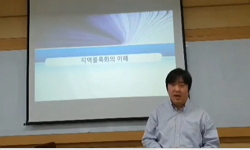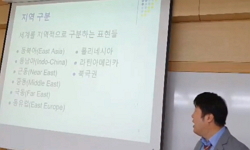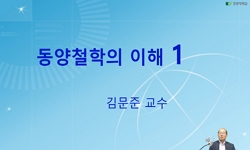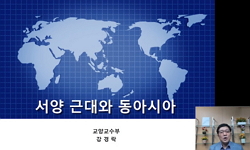중국은 지난 한 세대 동안의 역동적인 성장세에 힘입어 오늘날 국내총생산(GDP) 기준으로 세계 제2의 경제로 부상하였다. 중국은 이러한 성장을 바탕으로 최근 수 년 간에 걸쳐 정치·군사적 ...
http://chineseinput.net/에서 pinyin(병음)방식으로 중국어를 변환할 수 있습니다.
변환된 중국어를 복사하여 사용하시면 됩니다.
- 中文 을 입력하시려면 zhongwen을 입력하시고 space를누르시면됩니다.
- 北京 을 입력하시려면 beijing을 입력하시고 space를 누르시면 됩니다.

중국의 부상과 미일동맹: 상호인식과 전략 및 쟁점을 중심으로 = China`s Rise and U.S.-Japan Alliance: mutual perception, strategies and issues
한글로보기https://www.riss.kr/link?id=A100099594
- 저자
- 발행기관
- 학술지명
- 권호사항
-
발행연도
2014
-
작성언어
Korean
- 주제어
-
KDC
910
-
등재정보
KCI등재후보
-
자료형태
학술저널
-
수록면
117-148(32쪽)
-
KCI 피인용횟수
6
- DOI식별코드
- 제공처
- 소장기관
-
0
상세조회 -
0
다운로드
부가정보
국문 초록 (Abstract)
중국은 지난 한 세대 동안의 역동적인 성장세에 힘입어 오늘날 국내총생산(GDP) 기준으로 세계 제2의 경제로 부상하였다. 중국은 이러한 성장을 바탕으로 최근 수 년 간에 걸쳐 정치·군사적 영향력을 확대함으로써 역내 질서 변화를 시도하고 있다. 하지만 이러한 시도는 중국의 행태를 견제하고자 하는 역내 주요 세력들과의 관계에서 새로운 긴장을 조성하고 있으며, 이에 따라 동아시아 지역 정세의 불확실성 또한 증대되고 있다. 따라서 이 글은 중국의 부상이 동아시아 지역 질서에 부여하는 의미와 함께 중국의 공세적 행동을 억제하기 위해 역내의 또 다른 두 주요 행위자인 미국과 일본이 동맹 구조 내에서 취해온 조치 및 이에 대한 중국의 반응을 상호작용적 관점에서 분석하고 있다. 이로부터 이 글은 중국의 부상과 세력 투사에 대응하기 위해 미국과 일본이 동맹에 기반을 둔 공조를 강화해 오고 있고, 중국 또한 공세적 태도를 견지함으로써 갈등이 고조되고 있지만 3국 모두 그것이 파국적 국면으로 비화되는 선택은 하지 않을 것으로 결론짓고 있다.
다국어 초록 (Multilingual Abstract)
China has emerged as the second largest economy by Gross Domestic Product owing to dynamic growth for a generation. She now tries to change the regional order by increasing her political and military influence based on such growth. But such an attempt...
China has emerged as the second largest economy by Gross Domestic Product owing to dynamic growth for a generation. She now tries to change the regional order by increasing her political and military influence based on such growth. But such an attempt is creating new tension with other major regional powers who are seeking to contain China’s uncontrolled behavior. It accordingly increases uncertainty of the East Asian regional situation. In this regard, this paper analyzes the action taken by the U.S. and Japan in the alliance system to deter China’s aggressive actions and China’s response from the point of interaction, along with the implication which China’s rise provides to the East Asian regional order. After scrutinizing the issues, the writer concludes that any countries concerned would not make extreme choices to the extent that ongoing conflict would eventually drive the region into catastrophe, even though the conflict runs high because of the reinforcement of collaboration between the U.S. and Japan based on the alliance to confront China’s power projection with her rise and China``s adherence to assertive stance on major issues.
참고문헌 (Reference)
1 나영주, "센카쿠 제도 분쟁과 미국의 개입 전략" 동아시아국제정치학회 16 (16): 62-76, 2013
2 송화섭, "미일동맹의 조정과 한미동맹에 대한 함의 -예상되는 문제점과 정책 방향-" 한국전략문제연구소 17 (17): 7-35, 2010
3 정성윤, "미일동맹과 한국의 안보" 한국전략문제연구소 17 (17): 41-68, 2010
4 김종훈, "미국의 국방기획과 미일동맹" 한일군사문화학회 9 : 65-96, 2010
5 김성한, "동아시아 미군 재편에 대한 중국의 평가와 군사전략변화전망" 한국전략문제연구소 14 (14): 38-80, 2007
6 문흥호, "轉換期의 中日 關係와 臺灣問題" 아태지역연구센터 30 (30): 17-38, 2006
7 "World Economic Outlook Database"
8 "Why are South China Sea tensions rising?"
9 Suzuki, Motoshi, "The politics of coordination and miscoordination in the post-Cold War United States-Japan alliance: from a Japanese perspective" 10 (10): 2010
10 Castro, Renato Cruz de, "The US-Philippne Alliance: An Evolving Hedge against an Emerging China Challenge" 31 (31): 2009
1 나영주, "센카쿠 제도 분쟁과 미국의 개입 전략" 동아시아국제정치학회 16 (16): 62-76, 2013
2 송화섭, "미일동맹의 조정과 한미동맹에 대한 함의 -예상되는 문제점과 정책 방향-" 한국전략문제연구소 17 (17): 7-35, 2010
3 정성윤, "미일동맹과 한국의 안보" 한국전략문제연구소 17 (17): 41-68, 2010
4 김종훈, "미국의 국방기획과 미일동맹" 한일군사문화학회 9 : 65-96, 2010
5 김성한, "동아시아 미군 재편에 대한 중국의 평가와 군사전략변화전망" 한국전략문제연구소 14 (14): 38-80, 2007
6 문흥호, "轉換期의 中日 關係와 臺灣問題" 아태지역연구센터 30 (30): 17-38, 2006
7 "World Economic Outlook Database"
8 "Why are South China Sea tensions rising?"
9 Suzuki, Motoshi, "The politics of coordination and miscoordination in the post-Cold War United States-Japan alliance: from a Japanese perspective" 10 (10): 2010
10 Castro, Renato Cruz de, "The US-Philippne Alliance: An Evolving Hedge against an Emerging China Challenge" 31 (31): 2009
11 Rowan, Joshua, "The U.S.-Japan Security Alliance, ASEAN, and the South China Sea Dispute" 45 (45): 2005
12 "The Senkaku Islands Dispute: Oil Under Troubled Waters?"
13 Ikenberry, John, "The Rise of China and the Future of the West: Can the Liberal System Survive?" 87 (87): 2008
14 Elena Atanassova-Cornelis, "The Political and Security Dimension of Japan-China Relations: Strategic Mistrust and Fragile Stability" 국제관계연구소 26 (26): 165-187, 2011
15 "The International Institute for Strategic Studies"
16 San Pablo-Baviera, Aileen, "The China factor in US alliances in East Asia and the Asia Pacific" 57 (57): 2003
17 Kan, Shirley, "Taiwan: Major U.S. Arms Sales Since 1990" Congressional Research Service 1990
18 "South China Sea"
19 Bisley, Nick, "Securing the “Anchor of regional Stability”? The Transformation of the US-Japan Alliance and East Asian Security" 30 (30): 2008
20 "SIPRI Military Expenditure Database"
21 "Revise Article 9 for UN military action: PM Abe on TV"
22 "Pivot to Asia: Prepare for Unintended Consequences"
23 "National Security Strategy"
24 Ministry of Foreign Affairs of Japan, "National Defense Program Guideline for FY 2011 and beyond"
25 US Congress, "National Defense Authorization Act for Fiscal Year 2013"
26 "Maritime Territorial Disputes and Sovereignty Issues in Asia"
27 Atanassova-Cornelis, Elena, "Dynamics of Japanese and Chinese Security Policies in East Asia and Implications for Regional Stability" 2 (2): 2010
28 Wilson, Dominic, "Dreaming with BRICs: the Path to 2050" Goldman Sachs 2003
29 Garrett, Banning, "Chinese Apprehensions about Revitalization of the U.S.-Japan Alliance" 37 (37): 1997
30 "China’s military build-up threatens Taiwan"
31 Christensen, Thomas J., "China, the U.S.-Japan Alliance, and the Security Dilemma in East Asia" 23 (23): 1999
32 "China warns against U.S. F-16 upgrade for Taiwan"
33 Kurlantzick, Joshua, "Charm Offensive: How China’s Soft Power is Transforming the World" Yale University 2007
34 Sutter, Robert, "Assessing China's Rise and US Leadership in Asia - growing maturity and balance" 19 (19): 2010
35 Hosokawa, Morihiro, "Are U.S. Troops in Japan Needed? Reforming the Alliance" 77 (77): 1998
36 Office of the Secretary of Defense, United States, "Annual Report to Congress: Military and the Security Developments Involving the People's Republic of China 2013" 2013
37 Office of the Secretary of Defense, United States, "Annual Report to Congress: Military Power of the People’s Republic of China 2008" 2008
38 Zhao, Quansheng, "America’s Response to the Rise of China and Sino-US Relations" 13 (13): 2005
39 Department of the Navy, "A Cooperative Strategy for 21st Century Seapower"
동일학술지(권/호) 다른 논문
-
북한 지도자 리더십 비교: 성장과정 및 사상적 기반, 정당성, 리더십 특징을 중심으로
- 조선대학교 동북아연구소(구 통일문제연구소)
- 임재천 ( Jae Cheon Lim )
- 2014
- KCI등재후보
-
- 조선대학교 동북아연구소(구 통일문제연구소)
- 윤경섭 ( Kyung Seop Yun )
- 2014
- KCI등재후보
-
탈 냉전기 미국의 대 중앙아시아 정책과 함의: 구조적 현실주의 관점에서
- 조선대학교 동북아연구소(구 통일문제연구소)
- 박상남 ( Sang Nam Park )
- 2014
- KCI등재후보
-
중국의 지역 간 물류생산성 격차분석: 서부지역을 중심으로
- 조선대학교 동북아연구소(구 통일문제연구소)
- 고정오 ( Jung O Ko )
- 2014
- KCI등재후보
분석정보
인용정보 인용지수 설명보기
학술지 이력
| 연월일 | 이력구분 | 이력상세 | 등재구분 |
|---|---|---|---|
| 2027 | 평가예정 | 재인증평가 신청대상 (재인증) | |
| 2021-01-01 | 평가 | 등재학술지 유지 (재인증) |  |
| 2018-01-01 | 평가 | 등재학술지 유지 (계속평가) |  |
| 2015-01-01 | 평가 | 등재학술지 선정 (계속평가) |  |
| 2013-01-01 | 평가 | 등재후보학술지 유지 (기타) |  |
| 2012-01-01 | 평가 | 등재후보학술지 유지 (기타) |  |
| 2010-01-01 | 평가 | 등재후보학술지 선정 (신규평가) |  |
| 2009-06-30 | 학회명변경 | 한글명 : 동북아연구소 -> 사회과학연구원 부설 동북아연구소 | |
| 2009-06-11 | 학회명변경 | 한글명 : 통일문제연구소 -> 동북아연구소영문명 : The Institute of National Unification -> The Institute for Northeast Asia Research |
학술지 인용정보
| 기준연도 | WOS-KCI 통합IF(2년) | KCIF(2년) | KCIF(3년) |
|---|---|---|---|
| 2016 | 0.36 | 0.36 | 0.36 |
| KCIF(4년) | KCIF(5년) | 중심성지수(3년) | 즉시성지수 |
| 0.32 | 0.35 | 0.605 | 0 |





 RISS
RISS KISS
KISS







